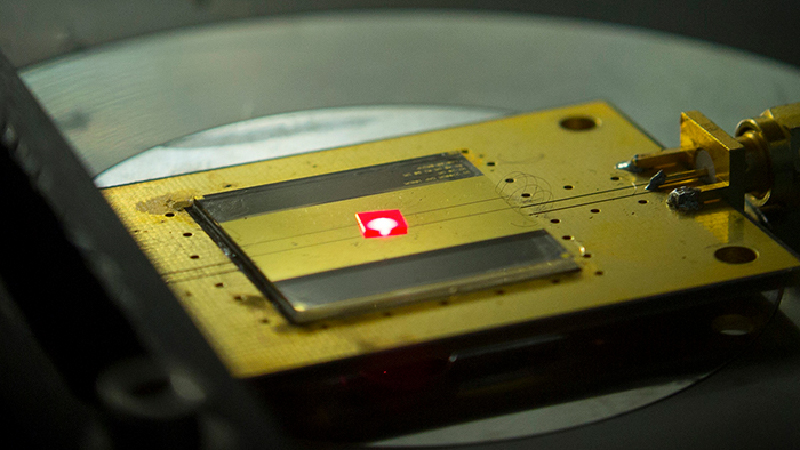The world's smallest radio receiver has parts that are two atoms in size
Carved out of imperfections in pink diamond

One of the great triumphs of the computing age has been miniaturisation. Over the last few decades, our ability to fit more and more complex machines into a smaller and smaller space has only accelerated.
Now, engineers at the Harvard John A. Paulson School of Engineering and Applied Sciences have built the smallest radio receiver ever made. They assembled it out of a series of defects in pink diamonds, some as small as two atoms in size.
Radios are made of five basic components: a power source, a receiver, a transducer, a tuner and a speaker. The receiver is the part that collects electromagnetic signals passing by, so they can be sent to the transducer to turn them into a current.
The Harvard receiver is made of imperfections in diamond crystals called 'nitrogen vacancy centers'. To make one, all you need to do is take two adjacent carbon atoms out of the diamond's structure and replace one with a nitrogen atom. The resulting imperfection can be used to convert information into light, making them handy for the development of quantum computing and photonics.
Green light
In the tiny radio, electrons in the nitrogen vacancy centers are powered by green light from a laser which makes them sensitive to electromagnetic fields, including the waves used in FM radio.
When it receives radio waves, it converts them and emits an audio signal as red light, which can then be played back as sound. An electromagnet surrounding the diamond is used to tune the frequency to a different station.
In testing, the diamond radio was extremely resilient – capable of music playback up to a temperature of 350C. “Diamonds have these unique properties,” said Marko Loncar, who led the research.
Sign up for breaking news, reviews, opinion, top tech deals, and more.
He hopes that the tiny machine could be used for many different applications. “This radio would be able to operate in space, in harsh environments and even the human body, as diamonds are biocompatible,” Loncar added.
The full details of the research were published in the journal Physical Review Applied.
